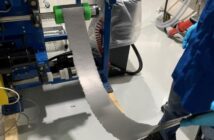Tesla’s giant battery is not only making global waves for its innovation, but also for fuelling a coal power station almost 1,000 kilometres away. On Dec. 14, the Loy Yang Power Station experienced 560MW of loss, which is significant in terms of operations. It’s also enough to power around 170,000 homes in Australia.
How Tesla’s battery saved the day:
Tesla’s power pack connected to a wind farm near the coal station. They supplied the energy network with 7.3 MW. Not only was it impressive because they were able to respond given the far distance, but they responded quicker than Yang’s backup power station that responds in six seconds.
When the power plant tripped, it meant that it was removed from the power grid. Before it could fully disconnect from the grid, Tesla was able to respond.
Then it happened…again:
Then it happened again on Dec. 22, when a different coal unit at Loy Yang lost 353 MW of power. This time Tesla responded in milliseconds, providing 16 MW injections to keep the grid under control.
It’s this incredible speed that is being commended across the world. When they provide Frequency Control Ancillary Services (FCAS), the battery responds instantaneously to any disturbances on the system. During emergencies, the battery is able to increase its output from zero to 100MW in 0.14 seconds.
The potential demise of other back-up plants:
The purpose of this battery was to defend against Australia’s power shortages, and this surely proved Tesla’s large investment in the battery pack.
Tesla’s battery pack is the epitome of resource reduction because it only uses as much power as required. It’s also pointing to the inevitable demise of backup power plants. Typically, all grids have these backup plants that use fossil fuels to provide energy during emergencies. Using renewable wind energy in conjunction with battery power is a potentially ground-breaking revolution.
The Tesla battery is only contracted for a few services to the local grid, so technically they didn’t have to respond.
It’s still not perfect:
While the battery pack can provide power to 30,000 Australian homes, it’s still puny in terms of lasting power. In fact, 70 MW of the 100 MW/129 MWh system lasts only 10 minutes. The remaining 30 MW provide three hours of power. This means that it eventually needs to help of fossil fuels to provide lasting power.
There’s also logistics to consider. Since the battery is attached to wind power generators, if it isn’t windy, it’s sort of useless. Lithium ion batteries only hold energy for a few weeks and they lose their charge as soon as the charging source is removed. In this case, it’s reliant upon wind.
So for now, it’s sort of good for backup. Perhaps it just needs an occasional power shortage to remind us of why it’s there.
Tesla is known for its unabashed enthusiasm for innovation. Let’s not forget their history of grand claims and shortcomings. Still, if they can solve immediate power shortages in milliseconds, we should tip our hats.



